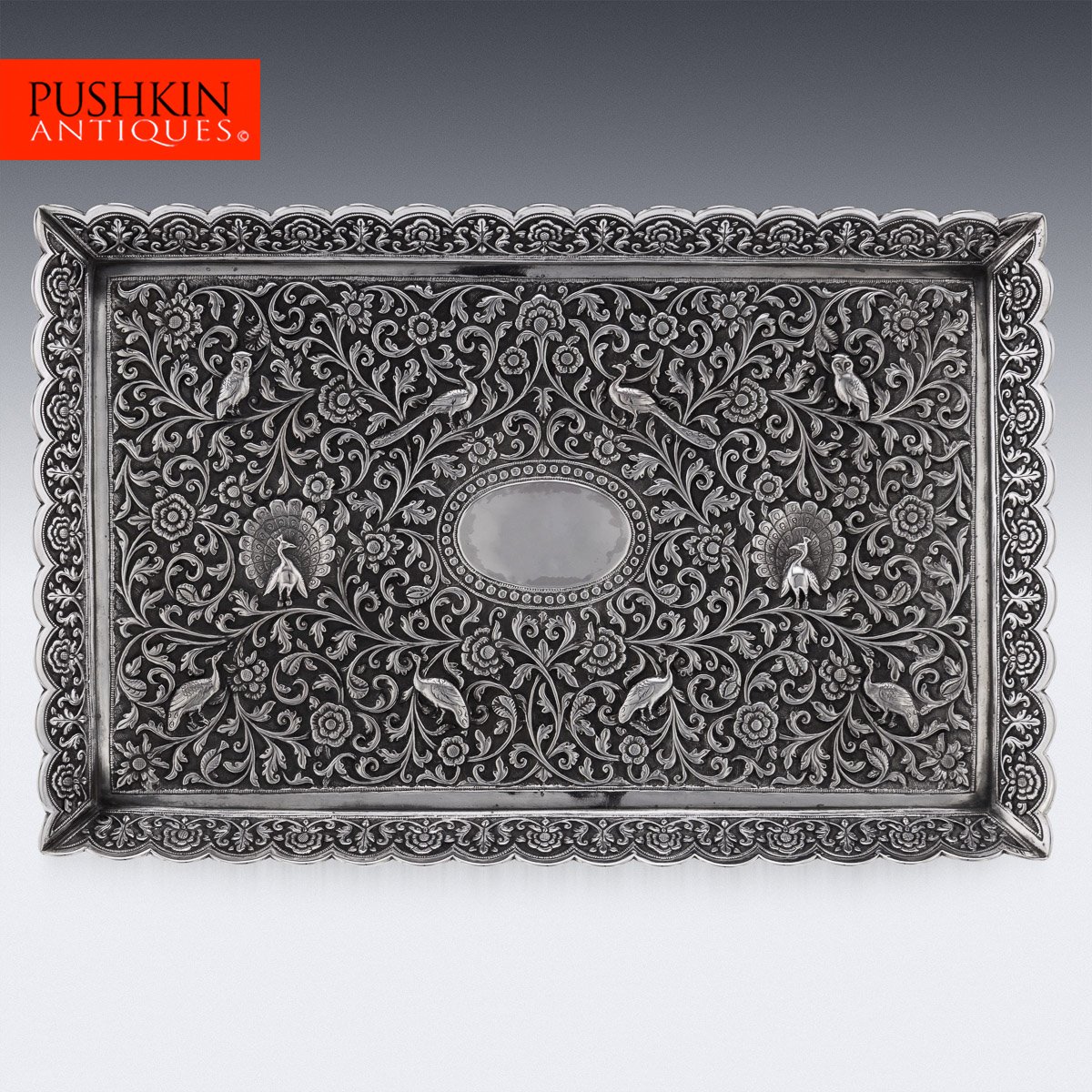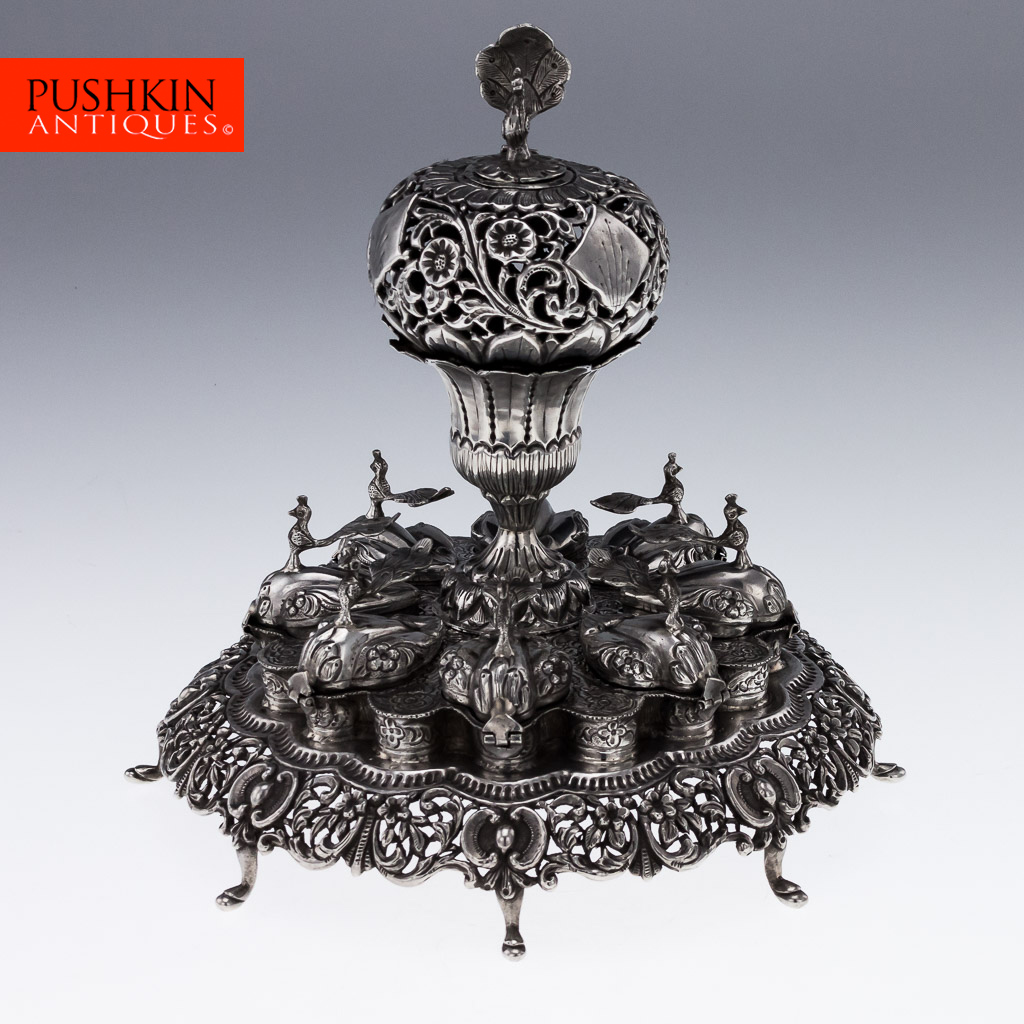 Image 1 of 24
Image 1 of 24

 Image 2 of 24
Image 2 of 24

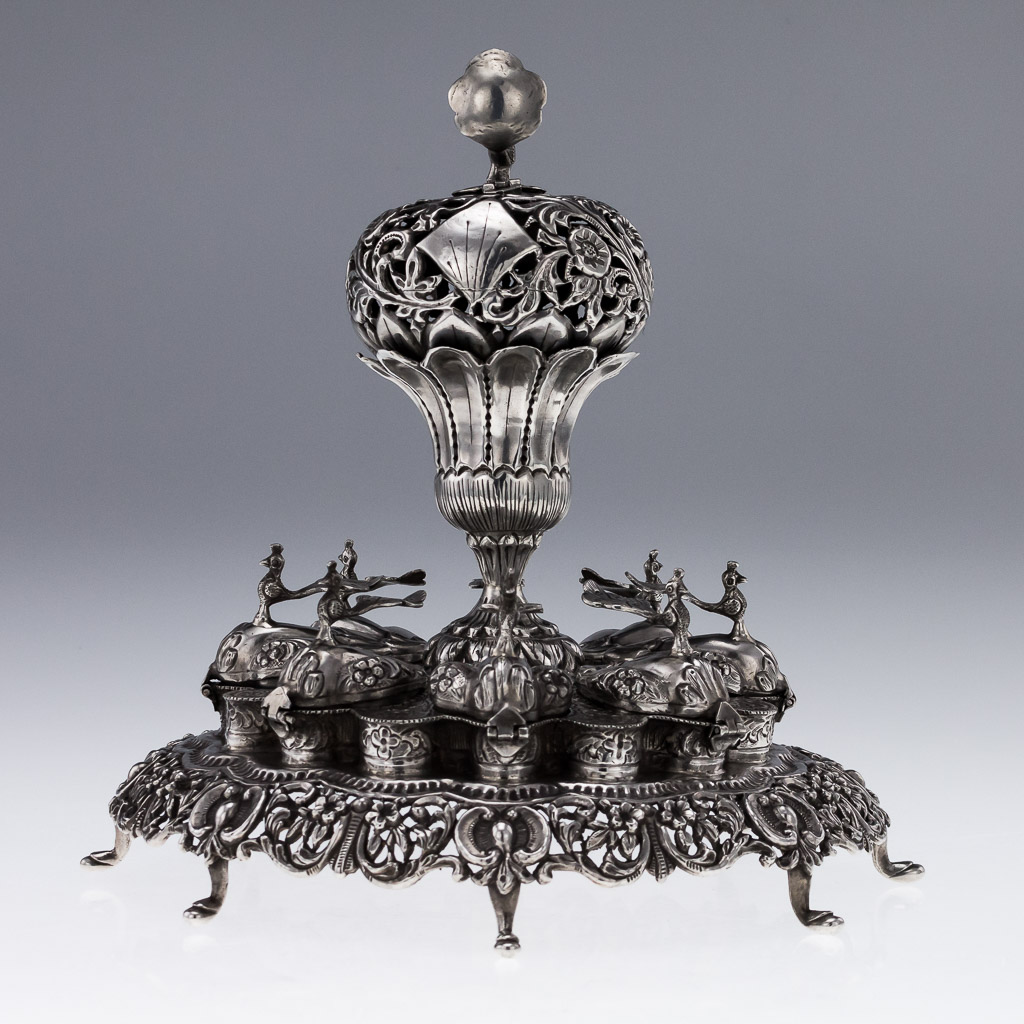 Image 3 of 24
Image 3 of 24

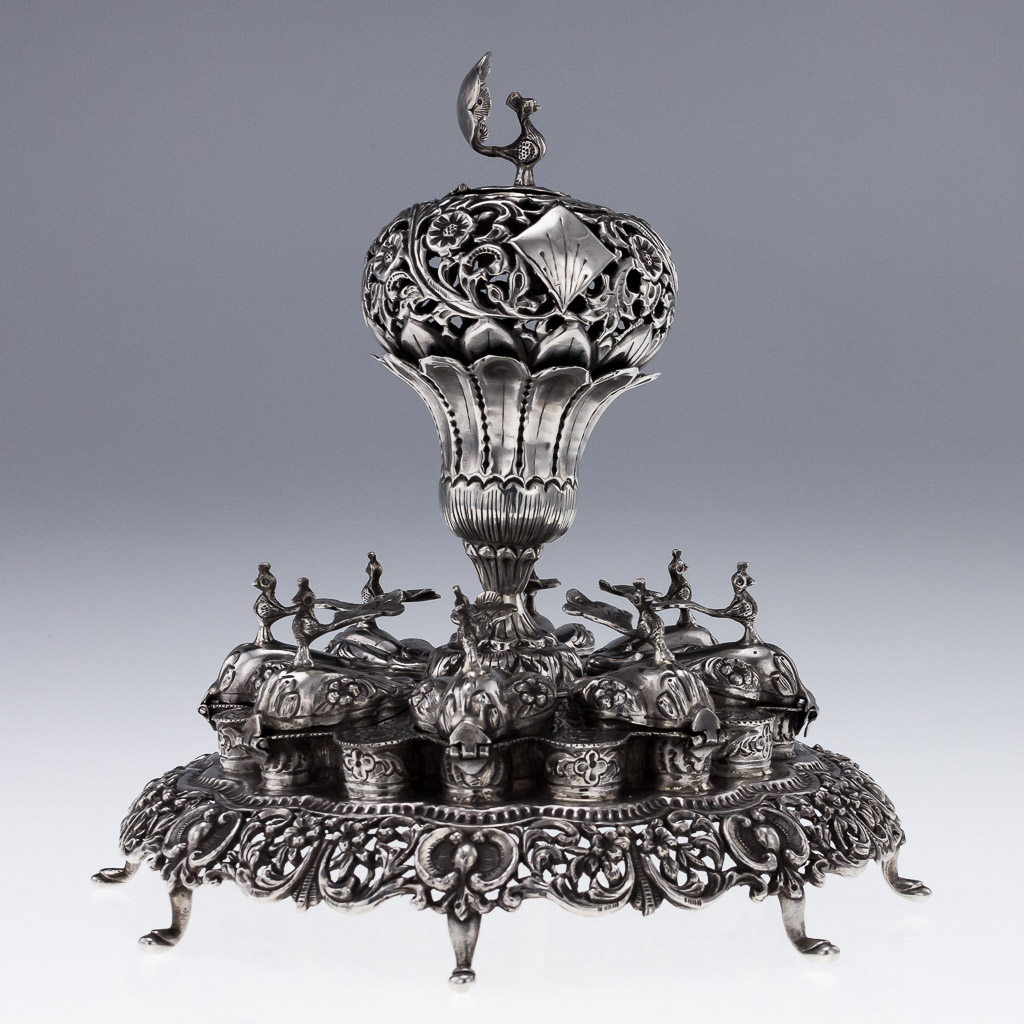 Image 4 of 24
Image 4 of 24

 Image 5 of 24
Image 5 of 24

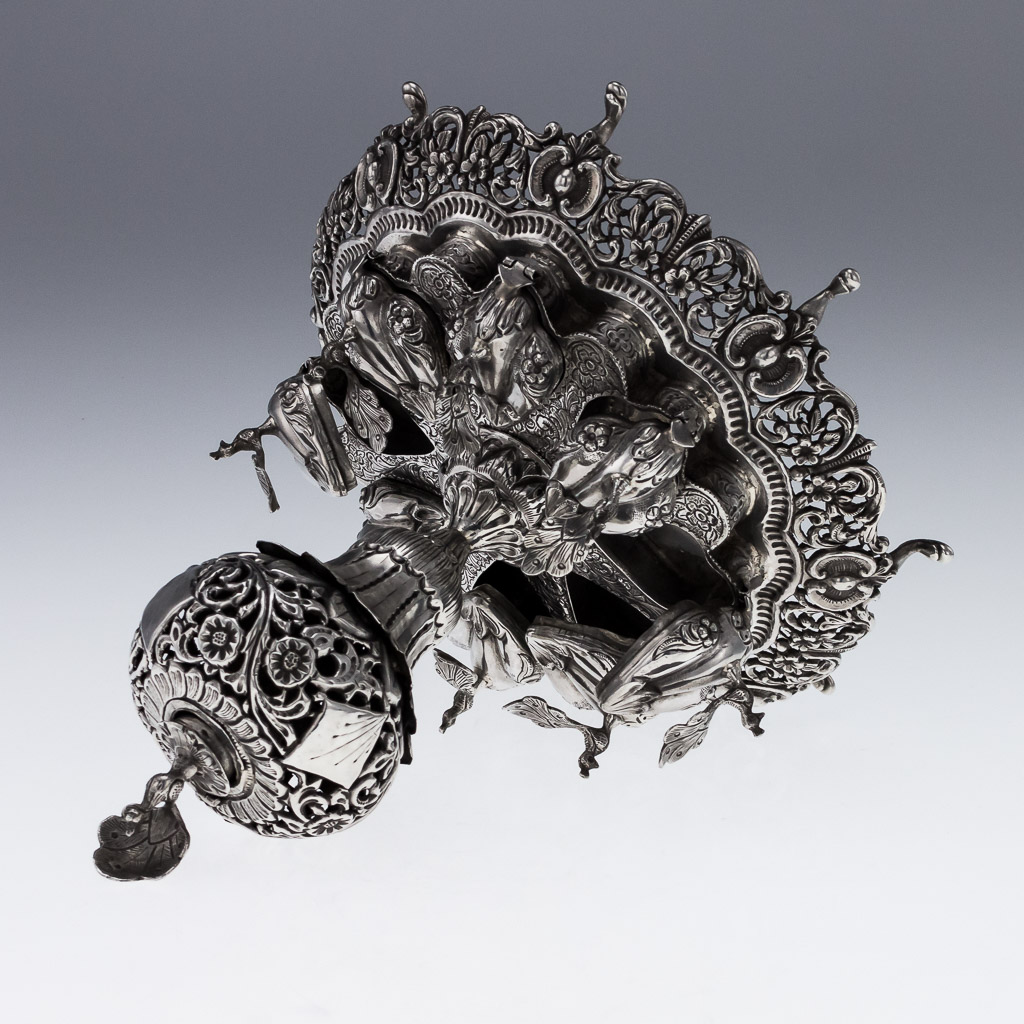 Image 6 of 24
Image 6 of 24

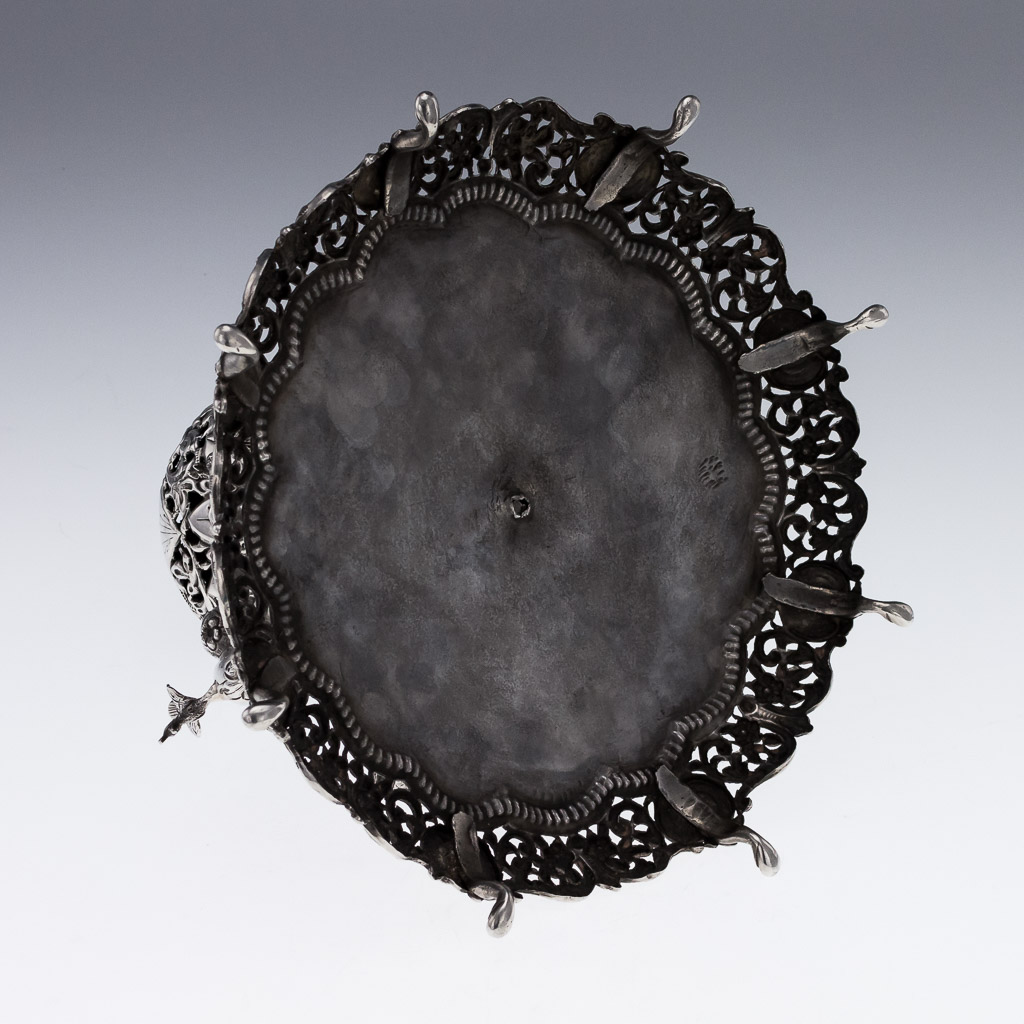 Image 7 of 24
Image 7 of 24

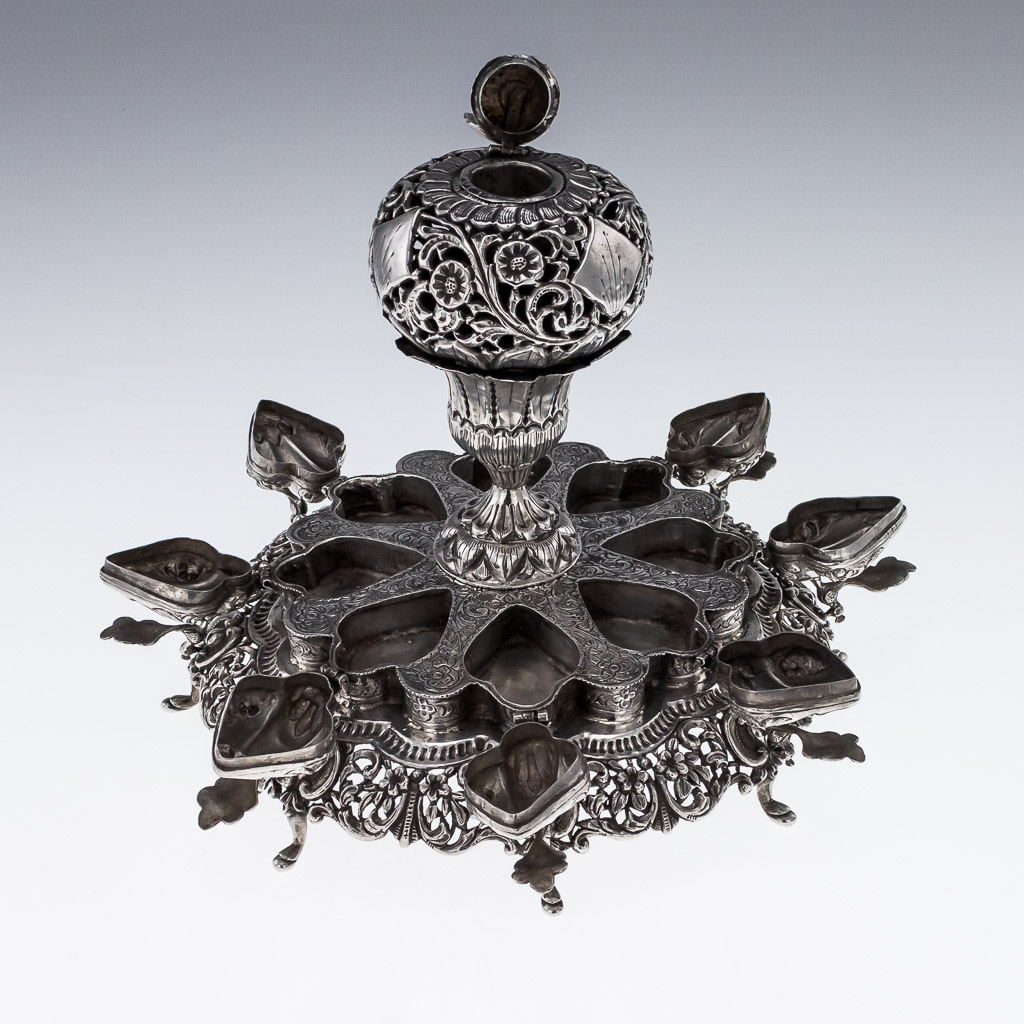 Image 8 of 24
Image 8 of 24

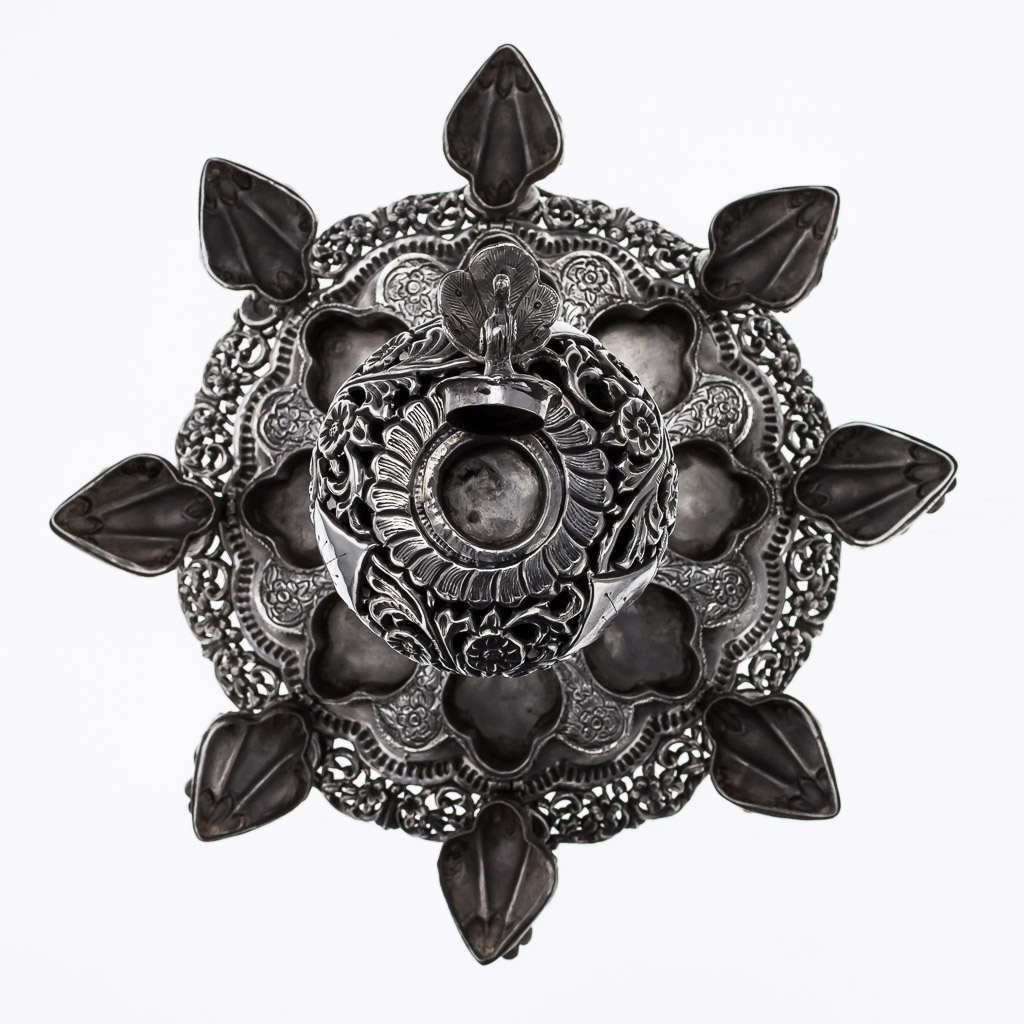 Image 9 of 24
Image 9 of 24

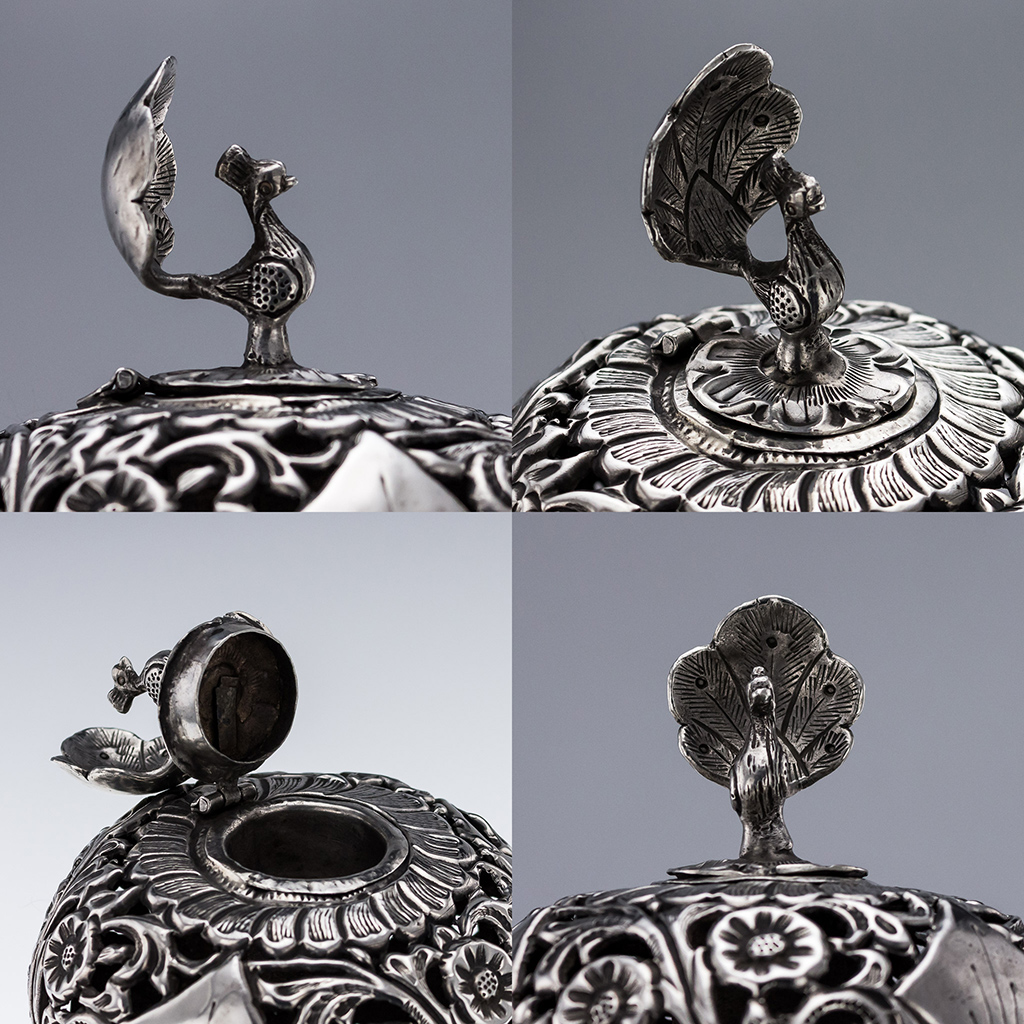 Image 10 of 24
Image 10 of 24

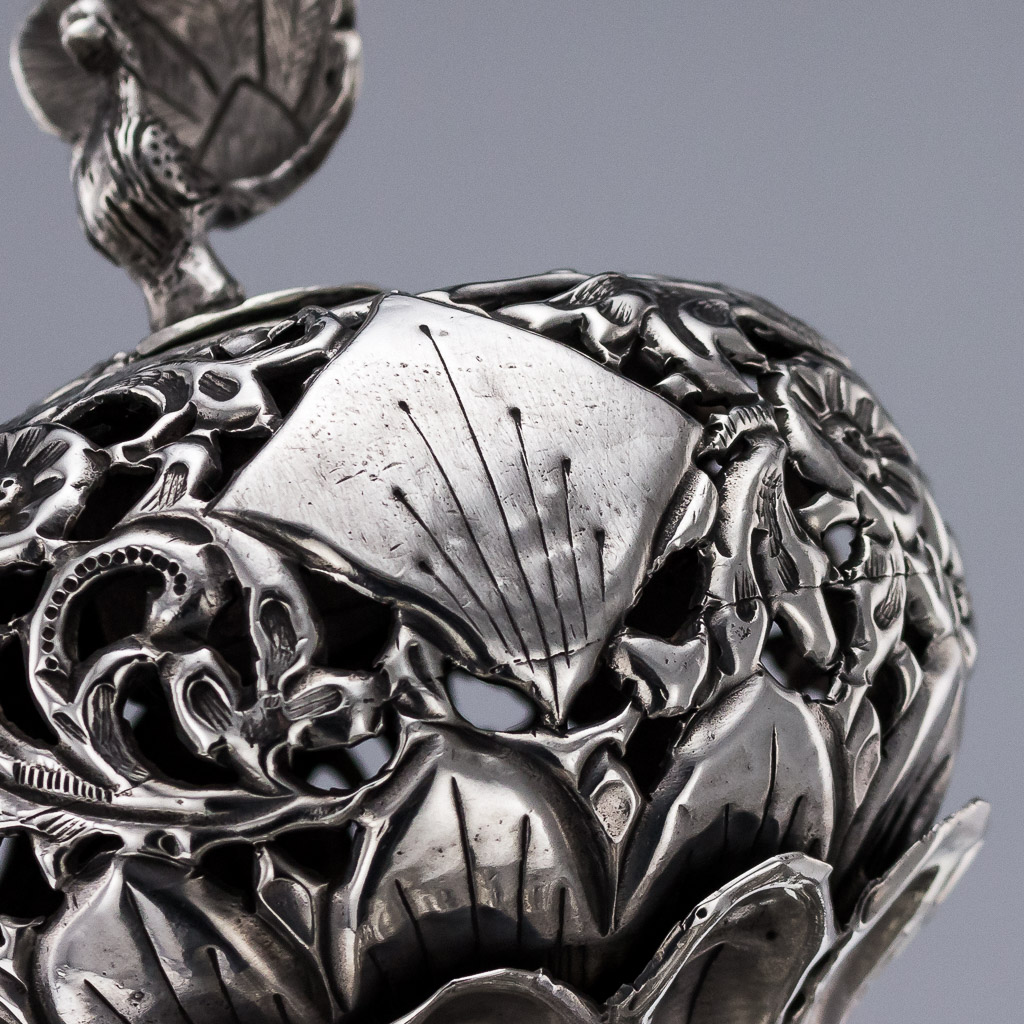 Image 11 of 24
Image 11 of 24

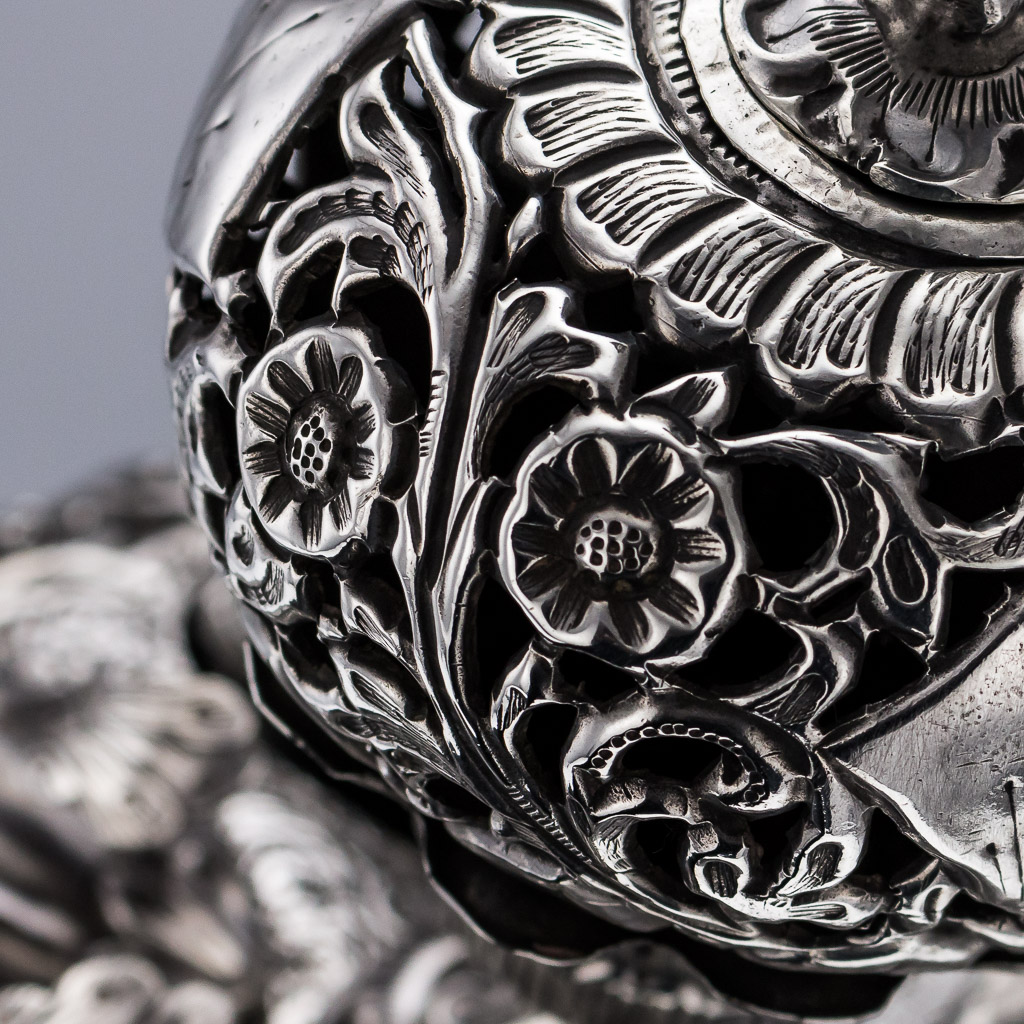 Image 12 of 24
Image 12 of 24

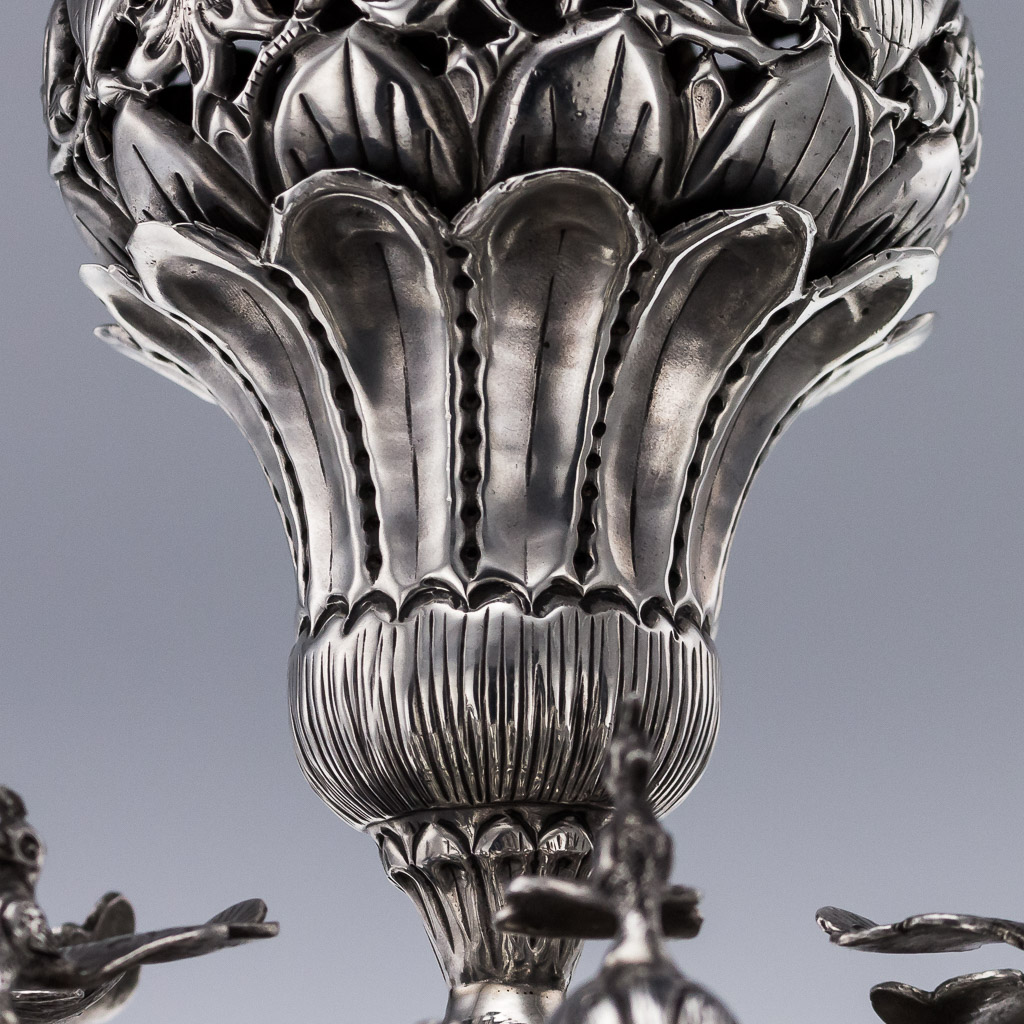 Image 13 of 24
Image 13 of 24

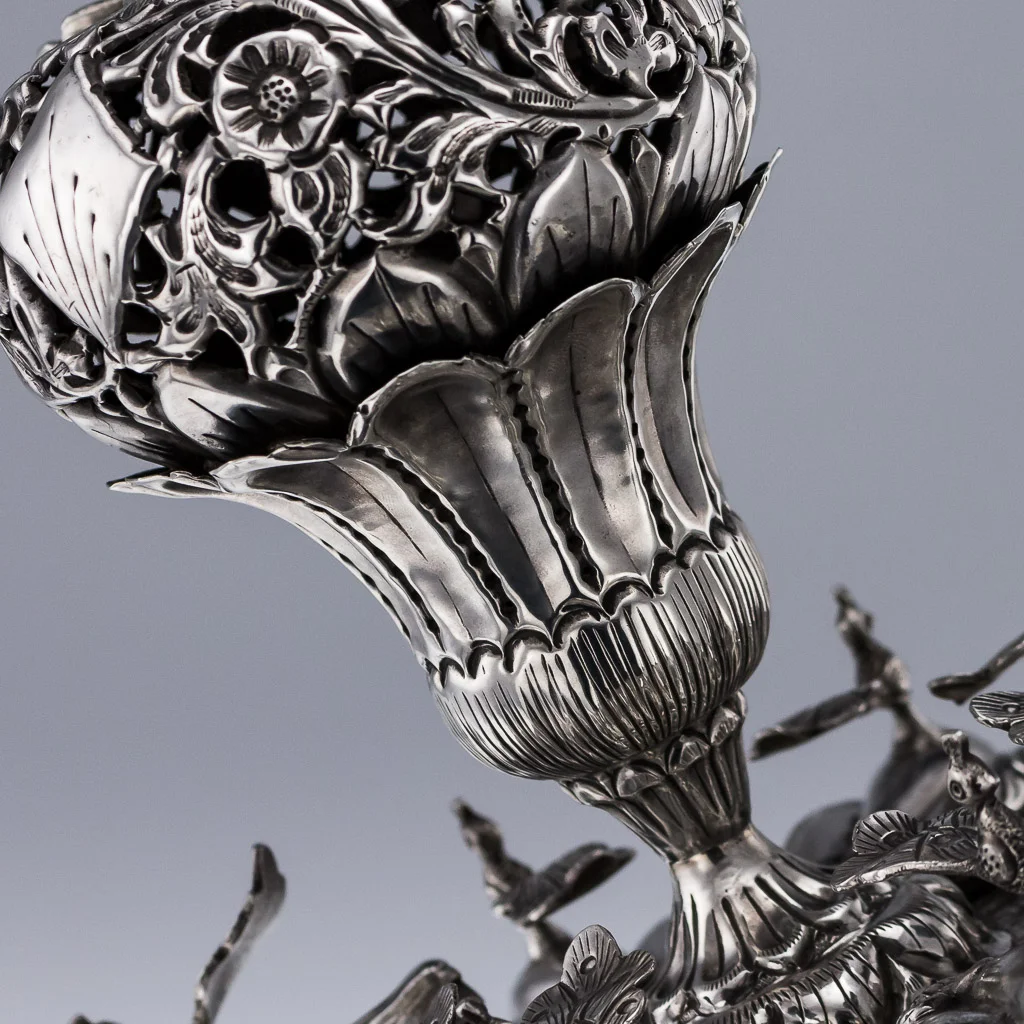 Image 14 of 24
Image 14 of 24

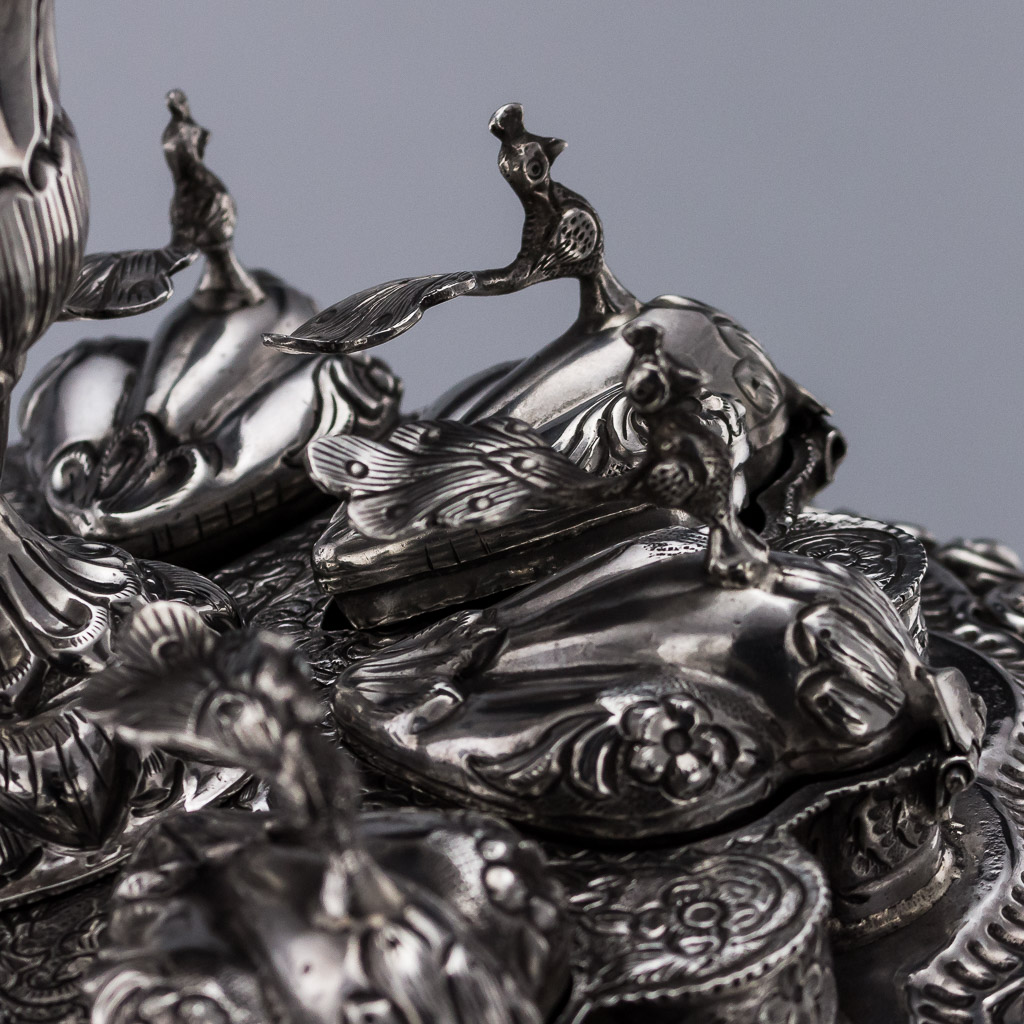 Image 15 of 24
Image 15 of 24

 Image 16 of 24
Image 16 of 24

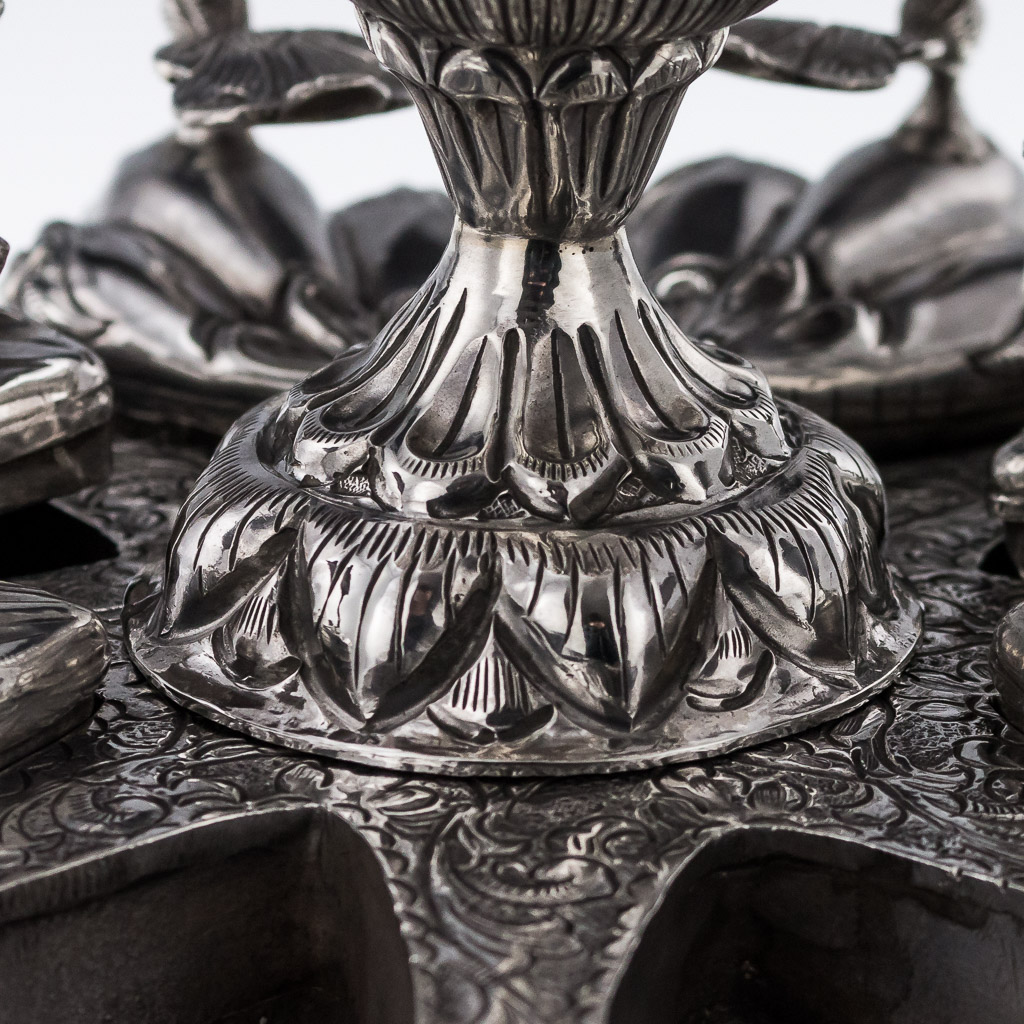 Image 17 of 24
Image 17 of 24

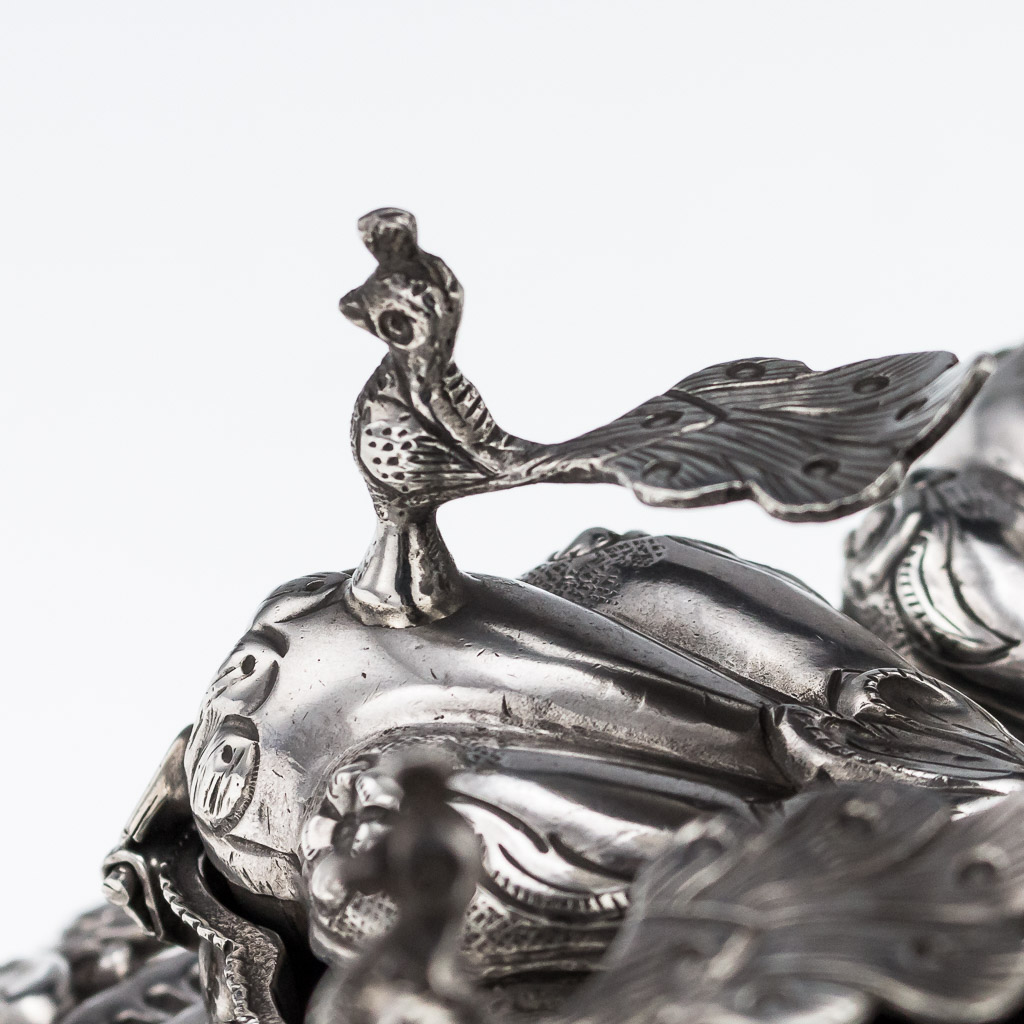 Image 18 of 24
Image 18 of 24

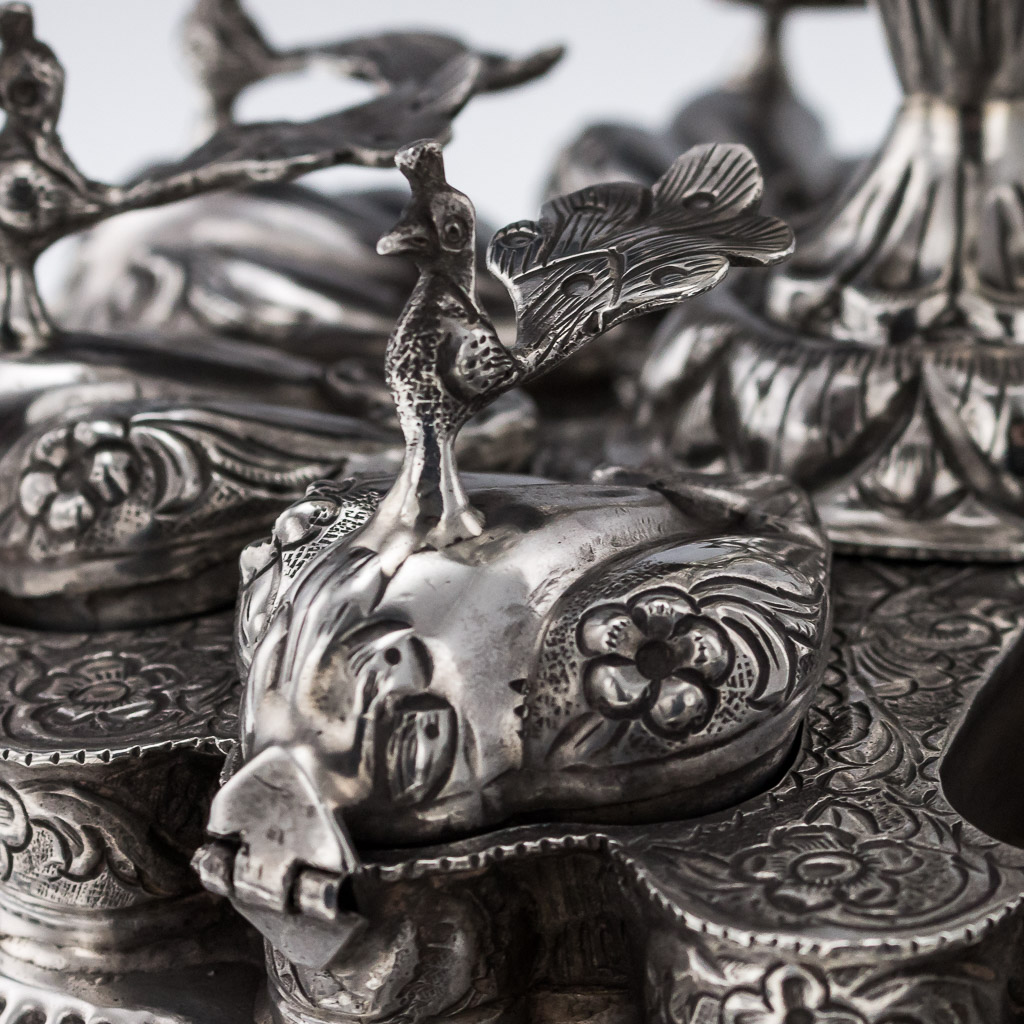 Image 19 of 24
Image 19 of 24

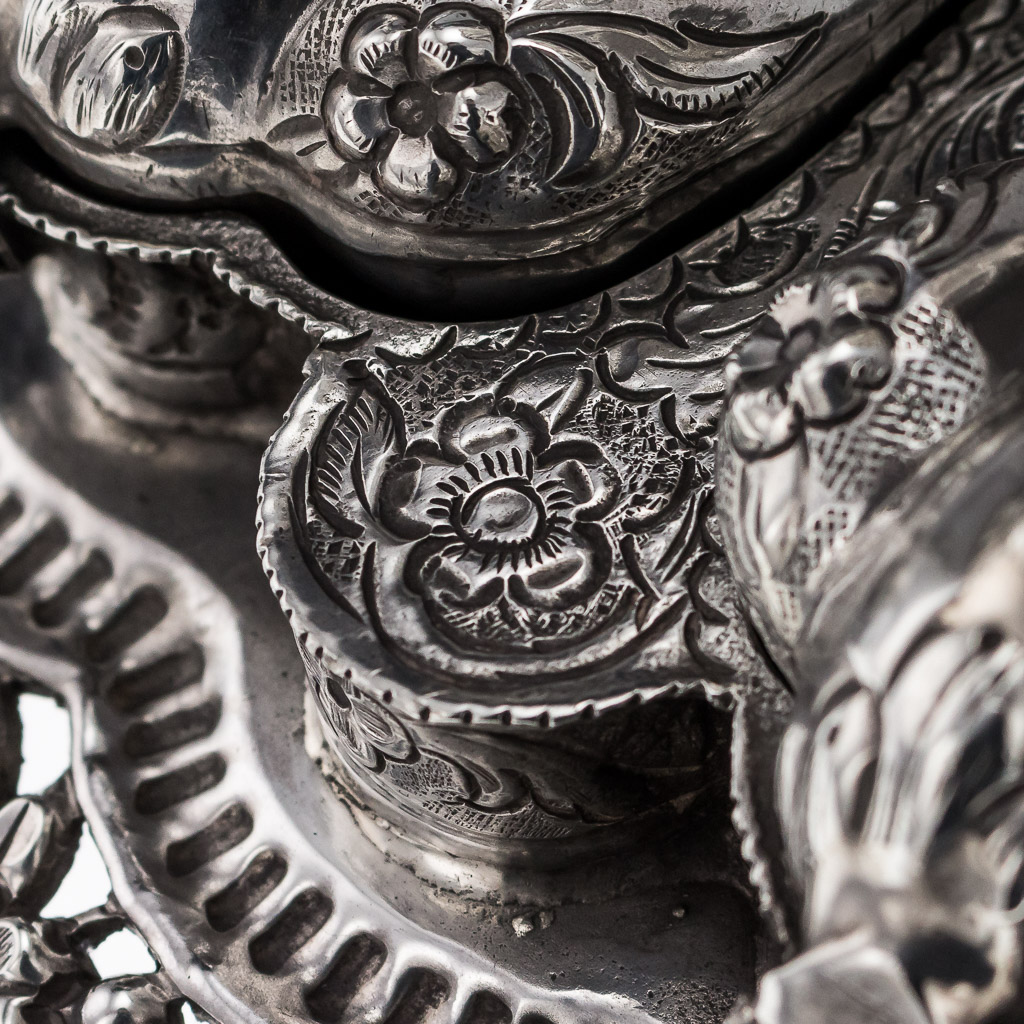 Image 20 of 24
Image 20 of 24

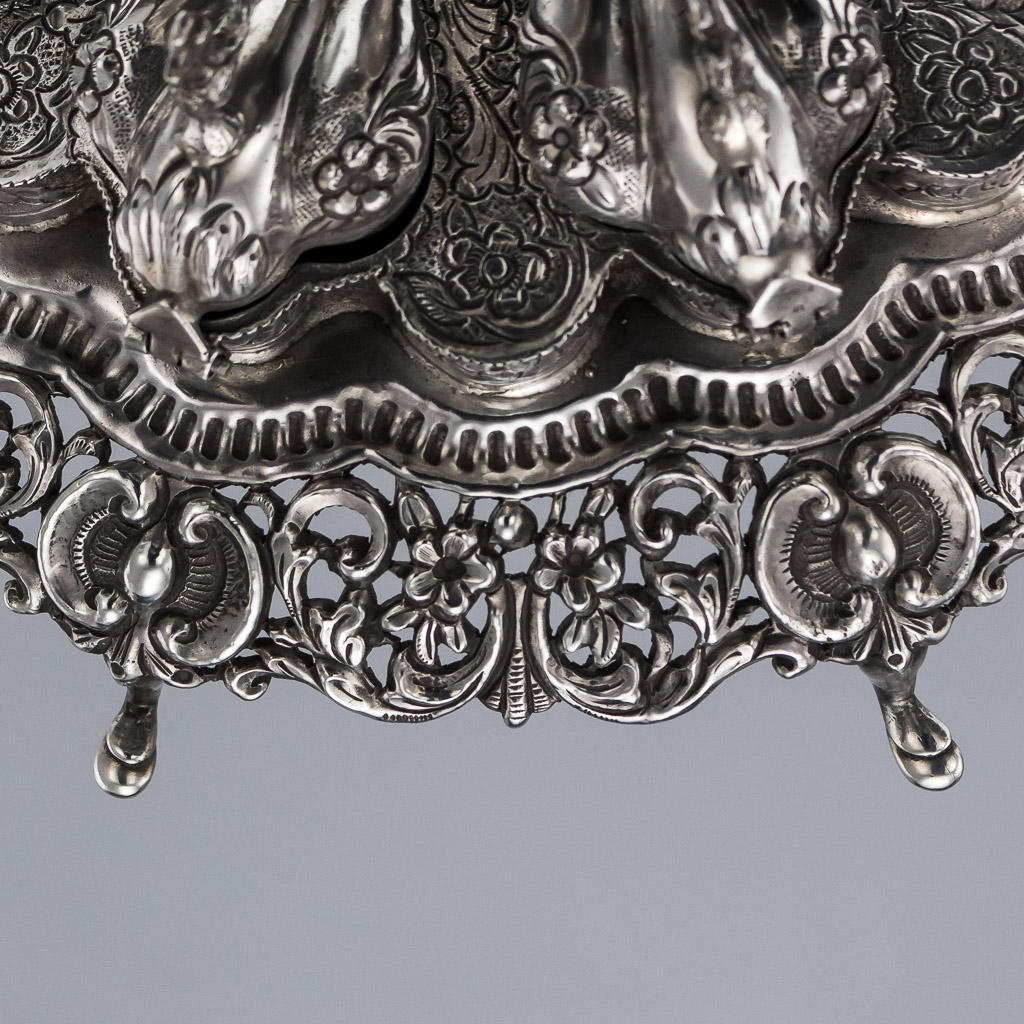 Image 21 of 24
Image 21 of 24

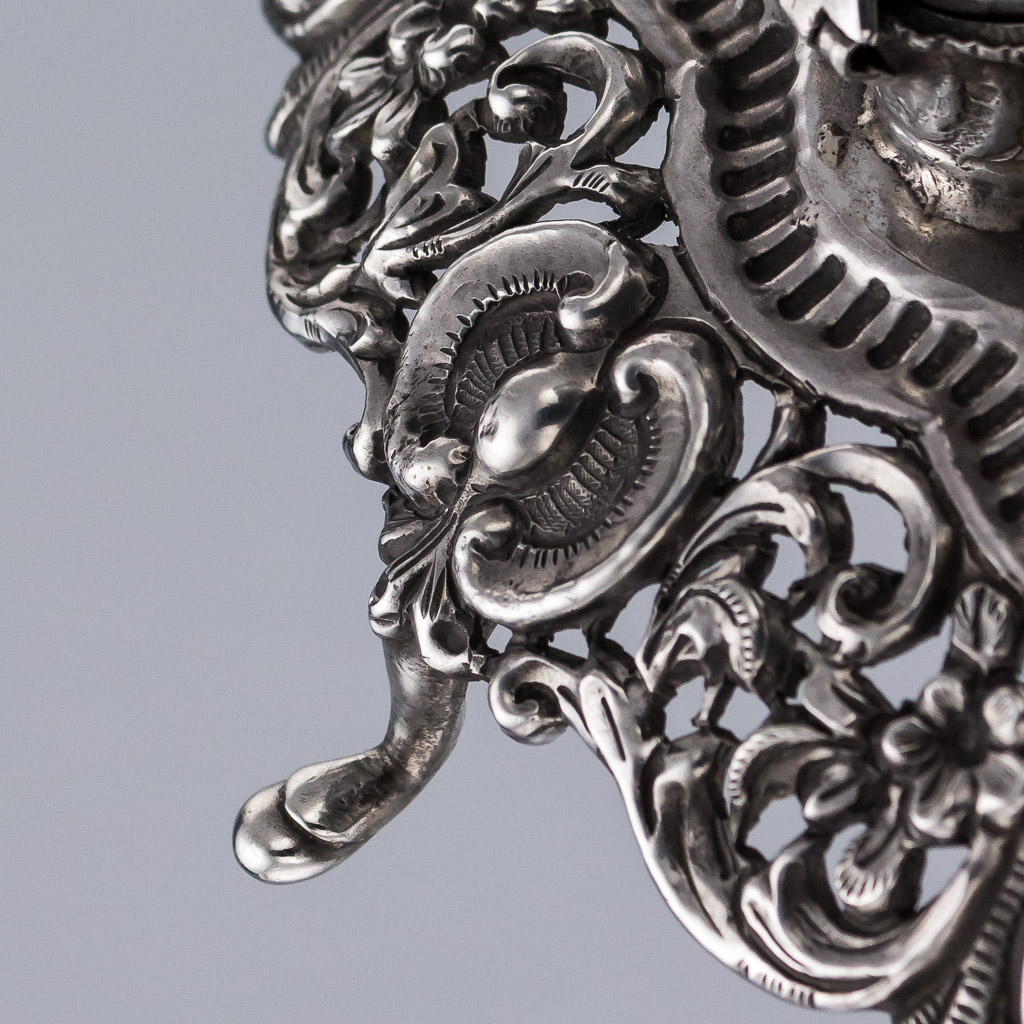 Image 22 of 24
Image 22 of 24

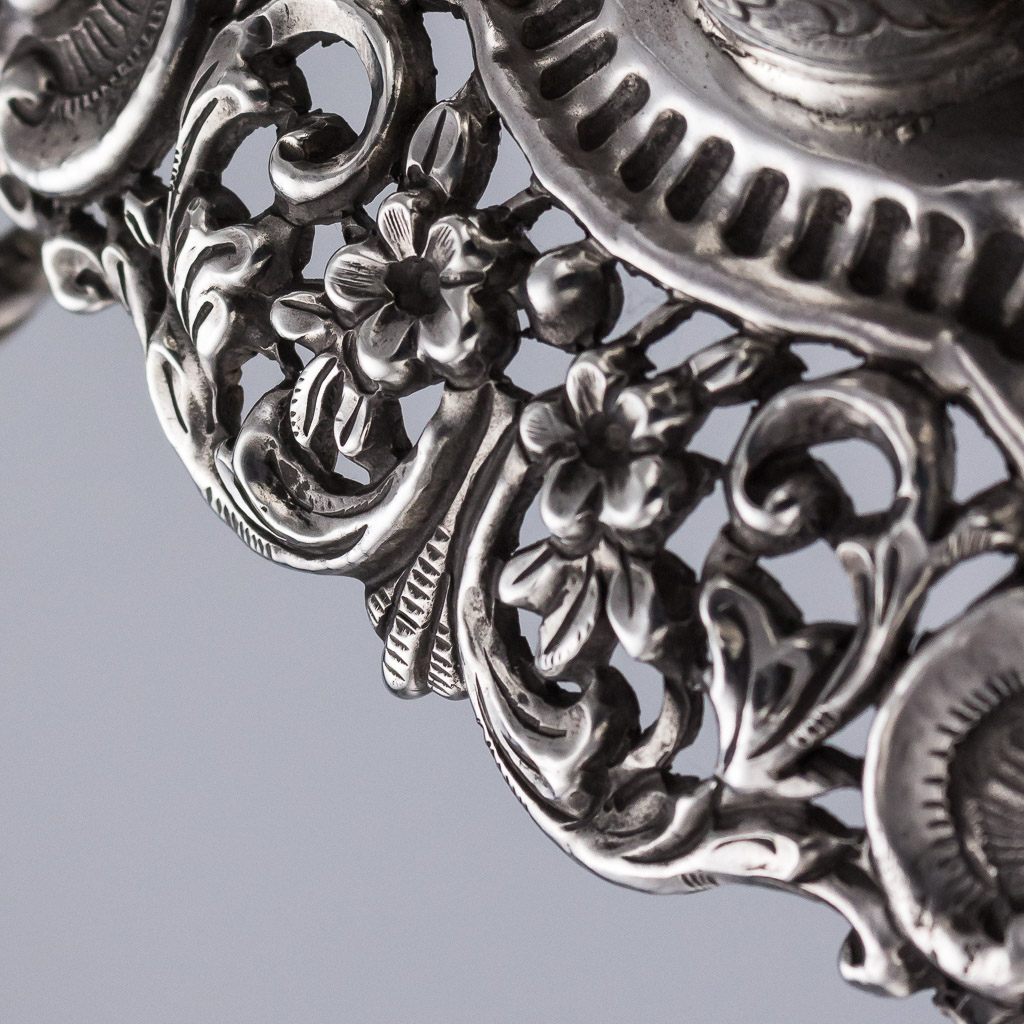 Image 23 of 24
Image 23 of 24

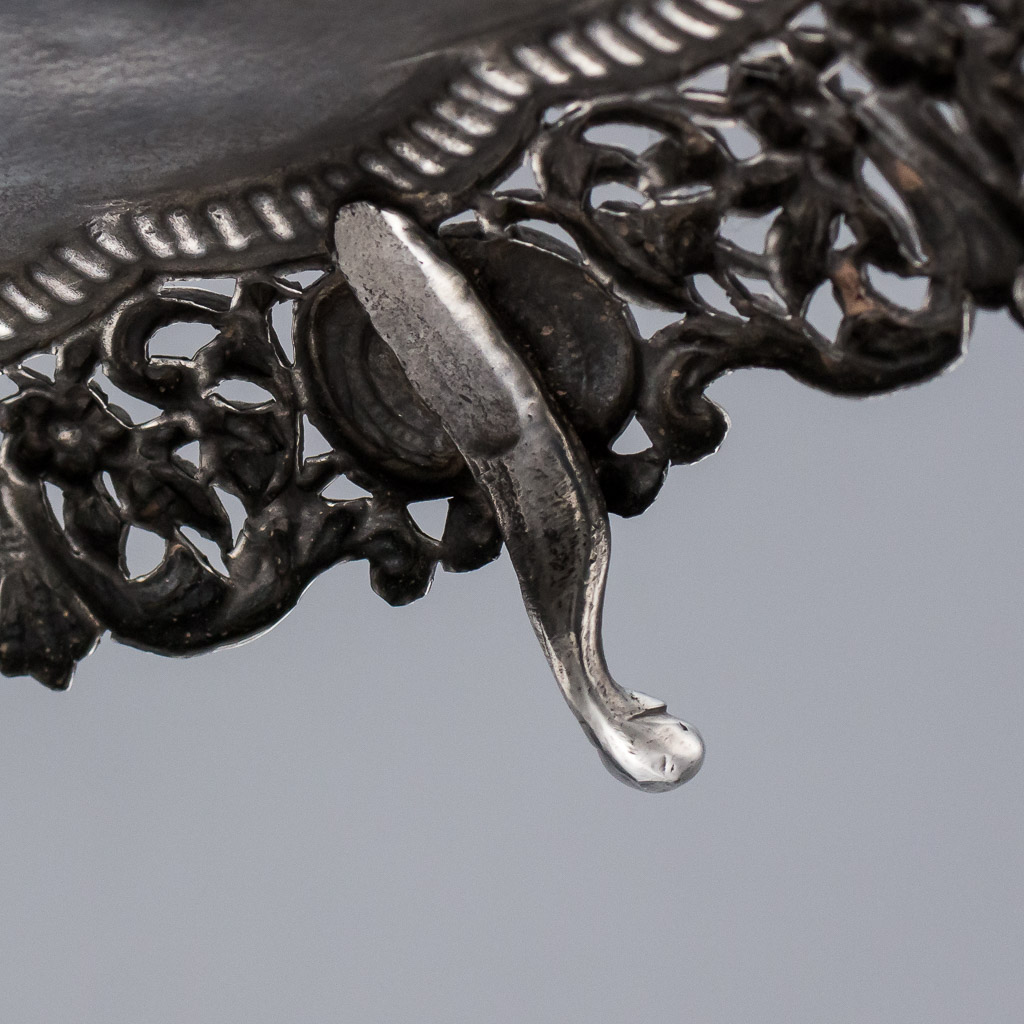 Image 24 of 24
Image 24 of 24

























ANTIQUE 19thC RARE INDIAN SOLID SILVER IMPRESSIVE SPICE BOX (PANDAN) c.1880
19th Century Indian Silver spice box (pandan), openwork base of shaped circular form, resting on 8 feet, the body flower-shaped, divided into eight heart-shaped compartments, each hinged domed lid surmounted by a peacock finial, the central dome stem featuring a similar floral and scrolling foliage, flaring cup with a lid also surmounted by peacock.
As often the case for Indian silver the piece is unmarked (acid tested show 900+ standard), it dates to 1880-1900.
REFERENCE NUMBER: A3036
19th Century Indian Silver spice box (pandan), openwork base of shaped circular form, resting on 8 feet, the body flower-shaped, divided into eight heart-shaped compartments, each hinged domed lid surmounted by a peacock finial, the central dome stem featuring a similar floral and scrolling foliage, flaring cup with a lid also surmounted by peacock.
As often the case for Indian silver the piece is unmarked (acid tested show 900+ standard), it dates to 1880-1900.
REFERENCE NUMBER: A3036
19th Century Indian Silver spice box (pandan), openwork base of shaped circular form, resting on 8 feet, the body flower-shaped, divided into eight heart-shaped compartments, each hinged domed lid surmounted by a peacock finial, the central dome stem featuring a similar floral and scrolling foliage, flaring cup with a lid also surmounted by peacock.
As often the case for Indian silver the piece is unmarked (acid tested show 900+ standard), it dates to 1880-1900.
REFERENCE NUMBER: A3036
DESCRIPTION
Antique 19th Century rare and impressive Indian Solid Silver spice box (pandan), openwork base of shaped circular form, resting on 8 feet, the body flower-shaped, divided into eight heart-shaped compartments, each hinged domed lid surmounted by a peacock finial, the central dome stem featuring a similar floral and scrolling foliage, flaring cup with a lid also surmounted by peacock.
The peacock is the vehicle of the eldest son of Shiva, Kartikeya, and was a very popular motif amongst the Ksatrya cast and particularly amongst Rajputs.
The heart-shaped lids have the same form of betel leaves. The box would have contained various ingredients to combine and fold in the betel leaf (a mild stimulant very popular in South-East Asia), often combined with other spices such as areca nut, lime (chunam) and other spices. Spices boxes of various forms appear in Mughal miniatures from the late 16th Century onwards. In courtly settings, the offering of pan marked the end of a visit.
A similar spice box, also surmounted by peacocks, is in the Victoria & Albert Museum, probably from Malwa (Central India) and dating to the first part of the 19th Century (please follow this link). This particular spice box is the biggest and most impressive ever seen, two or three time bigger compared to the usual size, and with more compartments, suggesting a big and important provenance. In a modern household it can be used as an important and decorative spice holder centerpiece.
As often the case for Indian silver the piece is unmarked (acid tested show 900+ standard), it dates to 1880-1900.
CONDITION
In Great Condition - No damage, just general wear.
SIZE
Height: 27cm
Width: 26.7cm
Weight: 1585g




